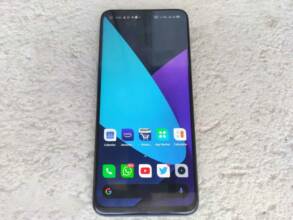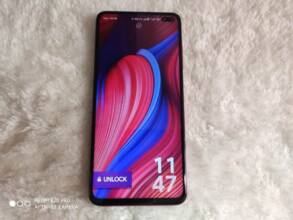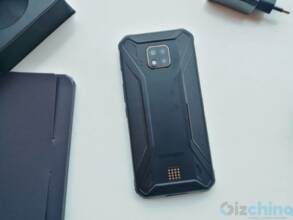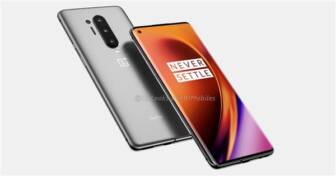Huawei P20 Pro Hands-On Review: World’s First Triple Camera Smartphone (Coupon Inside)
Oh, what they wanted it so. Apple and Samsung to the crown on mobile. I am of course talking about Huawei. And you know what? With the Huawei P20 Pro, the Chinese have finally succeeded. With verve even!
Anyone who, like me, thought that the innovations in the smartphone market were coming to an end, may have to adjust his opinion. Yes, the top Smartphones have become a lot more expensive, but on the other hand, it is often the case that you will unite many possibilities in one device. In particular, the photo quality has improved rapidly in recent times.
To the extent that I ask myself the question to what extent compact cameras and even affordable SLR and system cameras offer some added value for the average user. High resolutions, optical zoom, large apertures and successful bokeh effects are things that you will find in some of the better smartphones. It is no coincidence that they are all characteristics that the Huawei P20 Pro, the device I am discussing here, has in it.
My first experience with the P20 Pro was on the performance in Paris at the end of March. And as is often the case with Huawei, during the presentation it put a lot of emphasis on the fact that it is able to outperform its competitors in all areas. At least, on paper.
The P20 Pro has more cameras, more megapixels, a larger screen area and more (fill in) than the flagships of Samsung and Apple. Especially the famous DxO performance scores for camera quality turned out to be better than those of the competition and so reason enough for Huawei to put a heavy emphasis on it. Just to say that Huawei does not shy away from the direct comparison.

As a manufacturer, you understandably have to blow high from the tower, but in Paris, it was all rather unbelievable and above all ‘pushing’ about it. The Huawei marketing machine needed to be clearly fed. If you ask my opinion as a reviewer, the overall picture must be correct: the price, possibilities, and performance of a telephone should be in balance. Knowing that the P20 Pro is sold for $99, I set the bar very high for Huawei. After three weeks of testing, the verdict finally follows.
Build and Design
The past few weeks I walked around the P20 Pro with the Mate 10 Pro in my pocket, the other surprising topper of Huawei. The Mate 10 Pro is a very fine device on which many good features can also be found in the P20 Pro. The P20 may be the principal successor of the P10, yet it shares most of the features with the Mate range. In fact, I dare to say that Huawei with the P20 Pro has made its current flagship, the Mate 10 Pro, completely redundant. The P20 Pro is so good, I can already tell you now.
In appearance and design, however, the P20 Pro and the Mate 10 Pro appear to be two very different devices. The Mate 10 Pro feels even more solid and solid than the P20 Pro, and the first also has its own face. The P20 Pro is obviously concerned with the looks of the Apple phones, and especially the iPhone X. This has, of course, a lot to do with a notch at the top of the screen, but also the placement of the cameras at the back. In combination with the rounded corners, these items create a (sort of) Apple look. The only frivolity that Huawei affords is a red dash on the on-off button of the P20 Pro. That is a bit out of the ordinary, Huawei.
The strikingly slim P20 Pro is just a millimeter thinner and narrower than the Mate 10 Pro. And that makes a world of difference. The P20 Pro with 6.1-screen can only be operated with one (long) thumb. The time of the oversized phablets is clearly behind us. The P20 Pro offers some screen size and manageability concerns the best of both worlds, and I can only applaud that. It also fits perfectly into the smartphone trend of the past year: extra large screens in an already manageable, even smaller, format than before.
In this price range of phones, you can not escape a glass front and back and that is also the case with the P20 Pro. The use of glass does not have many advantages: the beautiful mirror effect of glass is mainly for the bling-bling. The disadvantages: continuously visible fingerprints, it is very sensitive to scratching and moreover, a fall immediately causes a lot of damage.
The only way to prevent all of that (more or less) is to purchase a cover, which then negates the mirroring. Nevertheless, I strongly recommend a case, even if only to absorb the smoothness that also affects the P20 Pro. It is not as extreme as the Galaxy S8, but you still keep it in mind. Unlike the Mate 10 Pro, Huawei does not provide a protective case this time. That’s too bad. By default there is a rather thick screen protector on the P20 Pro, so that is nice again.
I also tested the special purple Twilight color: that is a real chameleon that continuously changes color according to the light and angle of view. It is a truly fantastic effect. If you want to stand out with your phone, you should definitely consider that version of the P20 Pro.
Display
One of the distinctive factors of more expensive phones is that they are equipped with the best screens. High brightness and contrast display along with wide viewing angles are the typical features of a good screen. And in that respect, the P20 Pro delivers everything you would expect, including nicely saturated colors.
The OLED screen of the P20 Pro is in my opinion at least as good as that of the Mate 10 Pro. The maximum brightness level is more than enough to be able to read something on the screen even in full sunlight.
Only the resolution of 2,240 by 1,080 pixels may not be as high compared to the competition. That speaks rather than against the P20 Pro because you can not see the difference with the naked eye and especially because it has a positive influence on the battery life.
And then, of course, there is the notch. The notch of the P20 Pro screen is much less wide than the Apple iPhone X, and is, therefore, less noticeable. The fact remains that the space in the notification bar has to be filled in creatively (read: the icons are closer together) and that not all applications can be adapted just as easily.
It is only a matter of time before apps are updated to take the notch into account. The notch did not bother me at all, and in the end, it mainly serves to make a larger screen possible in a smaller housing.
Hardware Performance
The central engine in the P20 Pro is the same Kirin 970 SoC we know from the Mate 10 Pro. I myself had secretly hoped that Huawei would have used a newer soc. The Kirin 970 remains for the time being Huawei’s most powerful and indeed fully developed chipset.
Huawei lets you believe that there is a dose of AI technology in the chipset, and that will undoubtedly be the case, but as a user, you have absolutely no view because everything happens behind the scenes. The AI is used, among other things, in the management of the power consumption, the determination of the camera settings, and for specific apps.
I have run the eight-person Kirin 970 the same benchmarks as some other recent phones, and the results can be found in the table above. Benchmarks say you do not know everything as you might know.
If I include my own experiences while using the P20 Pro, I can only conclude that there is nothing that the Kirin 970 is currently getting on its knees. In any case, I did not know a single moment where there was the talk of hitches or any other delay. The P20 Pro always responded immediately, whatever I was doing. And that’s how it sounds for a flagship.
Battery Life
To map the battery life of a phone, I do not only focus on my own experiences and gut feeling, but I also base myself on data from the AccuBattery app. That app is active in the background and collects data that are based on my personal use during one week.
With your specific use pattern, the battery life can be completely different, so keep that in mind. In short, Bluetooth, Wi-Fi, and 4G are switched on continuously, and I set the automatic screen brightness mode. I also configure the P20 Pro with dark backgrounds and menus, and there are a total of 120 apps installed on the device.
On the other hand, I have no doubt that the 4.000 mAh battery of the P20 Pro can handle almost any usage scenario with ease. Huawei has its energy management in excellent order and this phone will easily operate for 1.5 to 2 days without having to recharge. Just like with the Mate 10 Pro, I feel comfortable with the P20 Pro for a few hours in Wazen without hanging this phone on the charger.
Should the battery unexpectedly discharge faster than expected, which is always possible, then the included quick charger will put you back on the road in no time. In short, in terms of battery, you absolutely do not have to worry about the P20 Pro.
Camera
During the presentation of the P20 Pro, by far the most attention was paid to the photo capabilities of this phone and that is entirely justified. Huawei equipped the P20 Pro with four (!) Cameras with a total of 92 megapixels: 24 megapixels for the selfie camera, and for the three cameras at the back it’s about 8 (tele), 40 (color) and 20 (black and white). ) megapixels.
The story of the cameras, and how they work together, is quite complex. In practice, the images from multiple cameras are combined, depending on the mode you choose. There is also a triple optical zoom in the color camera.
If you do not zoom in and switch on the full 40 megapixels, you can crop pictures to your heart’s content (cropping). Cropping is a nice alternative to the optical zoom, and you will notice that the level of detail with which the P20 Pro perceives things is very high. Do know that this mode also has its limitations. For example, I noticed that during a trampoline session with the kids, this 40-megapixel mode was inadequate to make really sharp pictures. The movements were too fast for that.
In some direct comparisons between 40 and 10-megapixel modes, there are also cases where the latter produces sharper images. I can not immediately explain why that is.
With the Galaxy S9, Samsung has the variable diaphragm size as the main distinguishing factor on the picture plane. Huawei does not (yet?), But I doubt that it matters a lot. Why? The P20 Pro is the first phone that even in the darkest scenes still manages to make a great picture. Certainly, the special night mode is nothing short of spectacular. You have to be patient for four seconds, but the result is usually phenomenal.
Even in the pitch dark, the P20 Pro still manages to take acceptable pictures, of course with the necessary noise, but it all remains very acceptable. This is simply unseen for a smartphone camera, and immediately a big step forward.
The only thing that disappointed me when it comes to photos is the selfie camera of the P20 Pro. The selfie camera with its 24 megapixels on paper is impressive. In practice, it is clear that the lesser of the four cameras with most visible noise, and not too sharp images.
Finally, I would like to point out that the automatic AI mode, which recognizes scenes and adjusts the camera settings, sometimes exaggerates when it comes to color reproduction. If the AI detects a lawn, then you can be sure that it will be super green in color. The same goes for blue skies that suddenly seem much bluer than you had in mind.
Videos
The P20 Pro also impresses when it comes to video. Of course, he supports 4K recordings (albeit without stabilization) and all four cameras are stabilized. Also, fun to play with on the P20 Pro is the super slow motion mode. It can record at a maximum of 960 frames per second (fps) or a 32-fold delay. In itself, such a mode with such a high fps is nothing new. Among others, Sony has been doing it for some time, only in full HD resolution. The P20 Pro is limited here to an HD resolution (720p) which ensures not too sharp images.
However, my main criticism of slow-motion mode is that it is a bit of a guess when the delay starts. The recording time with 960 fps is one second, so you can barely time and the moment in many cases (just) fog. That Samsung has better on the S9 for each other: the slow motion starts only when the movement is detected in a fixed part of the screen.
Camera app
With all those cameras on board, you would think that taking a snapshot becomes a whole affair. Fortunately, that is not so bad. After all, Huawei worked on its own camera app by simplifying it for daily use. Especially the different modes are now grouped more carefully, with less confusing options. For example, the bokeh effect is only below the camera modes called “Aperture” and “Portrait”, which is more logical.


If you want to tinker and experiment with the cameras, you can do that to the full. The fully manual mode is still present and that is good news for the photographers among us. The manual mode also works for video, but unfortunately, it turns out that you have far less setting options than with photos.
Software
In terms of software, Huawei has been taking a while to at least provide all their new phones with Android version 8 (Oreo). For the P20 Pro that is even the latest Android 8.1 and that is always a nice start. The EMUI8 skin also offers a lot of setting options and extras, even though some are very deeply hidden (such as the always-on screen function). It is also unfortunate that with EMUI8 incoming notifications on a locked screen are not immediately visible. You, therefore, have to unlock the phone first.

I would also like to mention one thing here: the automatic upload functions of Google Photos and Dropbox did not work exactly the way it should on the P20 Pro. Photos are only uploaded when I explicitly opened these apps. The (too) strict adjustment of background apps is typical for Chinese phones, but even after configuring the battery settings of individual apps, the problem with those apps remained intact. Who has the golden tip, let me know in the comments below.
Extra possibilities
As far as extras are concerned, there are not many things that distinguish the P20 Pro. Only the built-in IR blaster can be useful for those who want to use the phone as a remote control. I miss further support for Bluetooth version 5.0, something that the competition does have.
In the box, you will find a charger with USB-C cable with which you can fully charge the P20 Pro in about 30 minutes. A simple headset is also included. I find it silly that all those accessories are completely in white, and therefore not really fit with the device itself.
Conclusion
In the introduction I gave it a bit away: the P20 Pro is the most impressive phone I have had in the past year. That has mainly to do with the cameras. Almost every day I was amazed at the quality of the photos that the P20 Pro produced. There were real gems. And this without hopelessly searching for the right settings or experimenting a lot. That Huawei dares to do the (color) truth, I like to take for granted. Also in most other areas, the P20 Pro throws high eyes: it is really fast, has baking storage capacity, and the battery is tireless.
The P20 Pro is nothing less than a statement. Finally, Huawei is hovering at the same high level as Apple and Samsung … and it even surpasses those manufacturers on a number of points. This is a special punishment device, although with a price of 899 euros it remains an expensive bird. In terms of brand, Huawei also does not have the same aura as Apple and Samsung have, but if it continues to innovate in this way, the Americans and Koreans really have to adjust their numbers. Congratulations Huawei with the P20 Pro: it is a more than worthy flagship!
| Update Date | Product Name | Final Prices | Link on Coupon | Limited Qty | Expiry Date |
| 2018/04/24 | HUAWEI P20 Pro 6GB 64GB Jewelry Blue | $885.99 | IELQDQEG | 100 | 2018/05/18 |
| 2018/04/24 | HUAWEI P20 Pro 6GB 128GB Aurora Color | $999.99 | P20PRO128GB | 100 | 2018/05/18 |
| 2018/04/24 | HUAWEI P20 Pro 6GB 256GB Jewelry Blue | $1,099.99 | P20PRO256GB | 100 | 2018/05/18 |
| 2018/04/24 | HUAWEI P20 6GB 64GB Cherry Pink Gold | $689.99 | HBEAKKYN | 100 | 2018/05/18 |
| 2018/04/24 | HUAWEI P20 6GB 128GB Jet Black | $779.99 | YYEXBEHL | 100 | 2018/05/18 |
Score: 4.5 / 5
Positive points
+ Android 8.1 Oreo
+ Camera quality and creative possibilities
+ Fantastic screen
+ Ergonomics and build quality
+ Very long battery life
+ Powerful speakers with bass
+ 128 GB storage capacity
Negative points
– No wireless charging
– Rear cameras far out
– Selfie camera does not convince
– No Bluetooth 5.0























